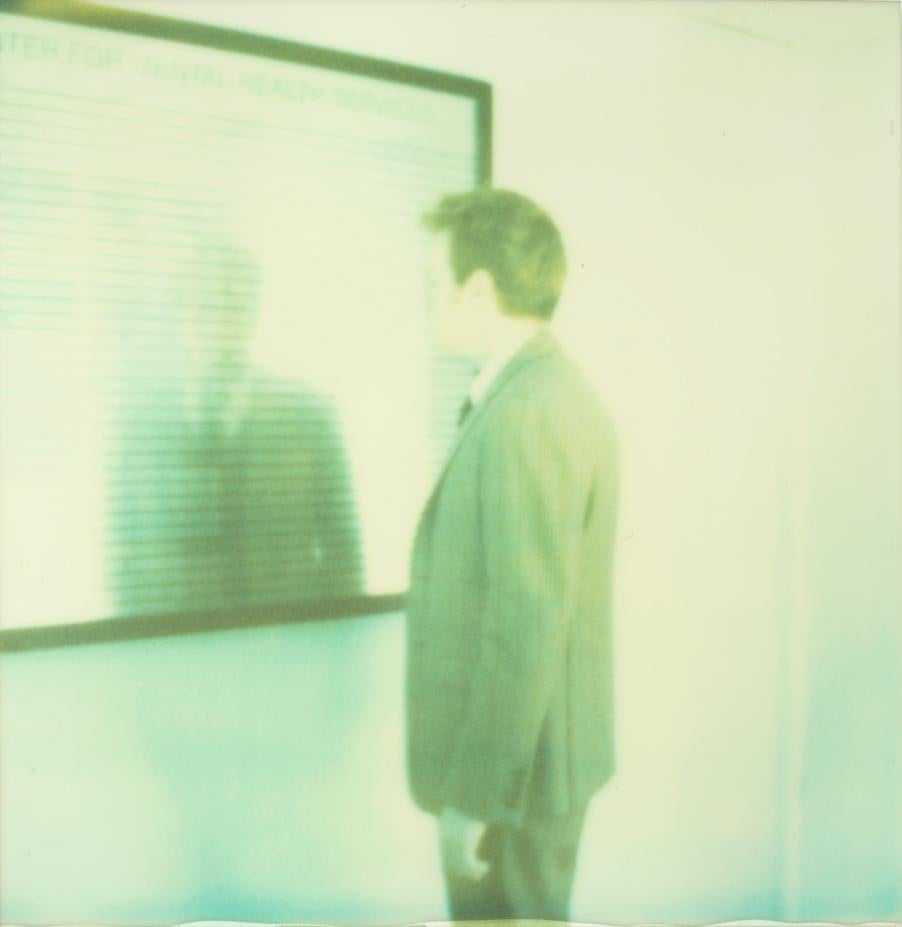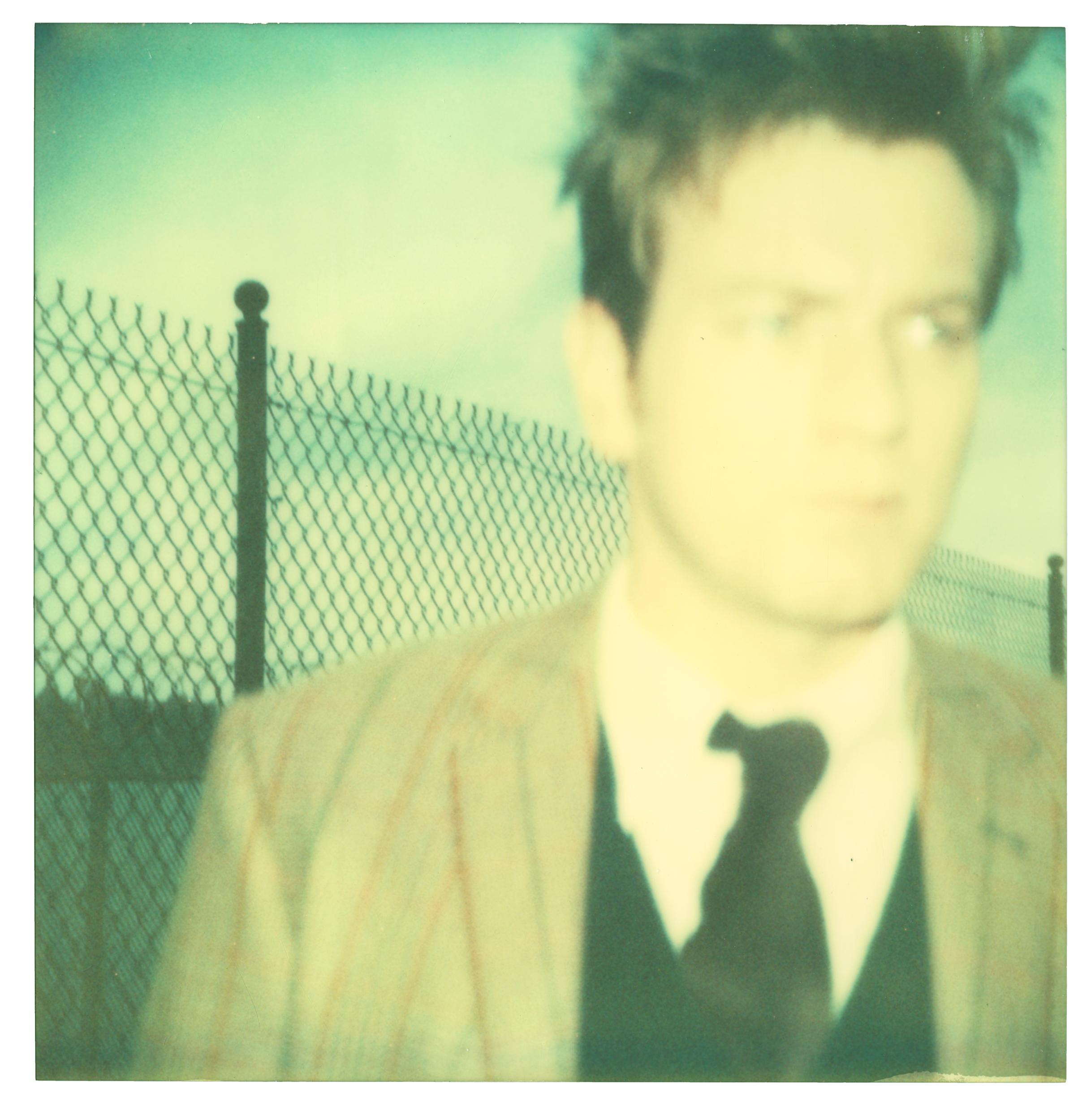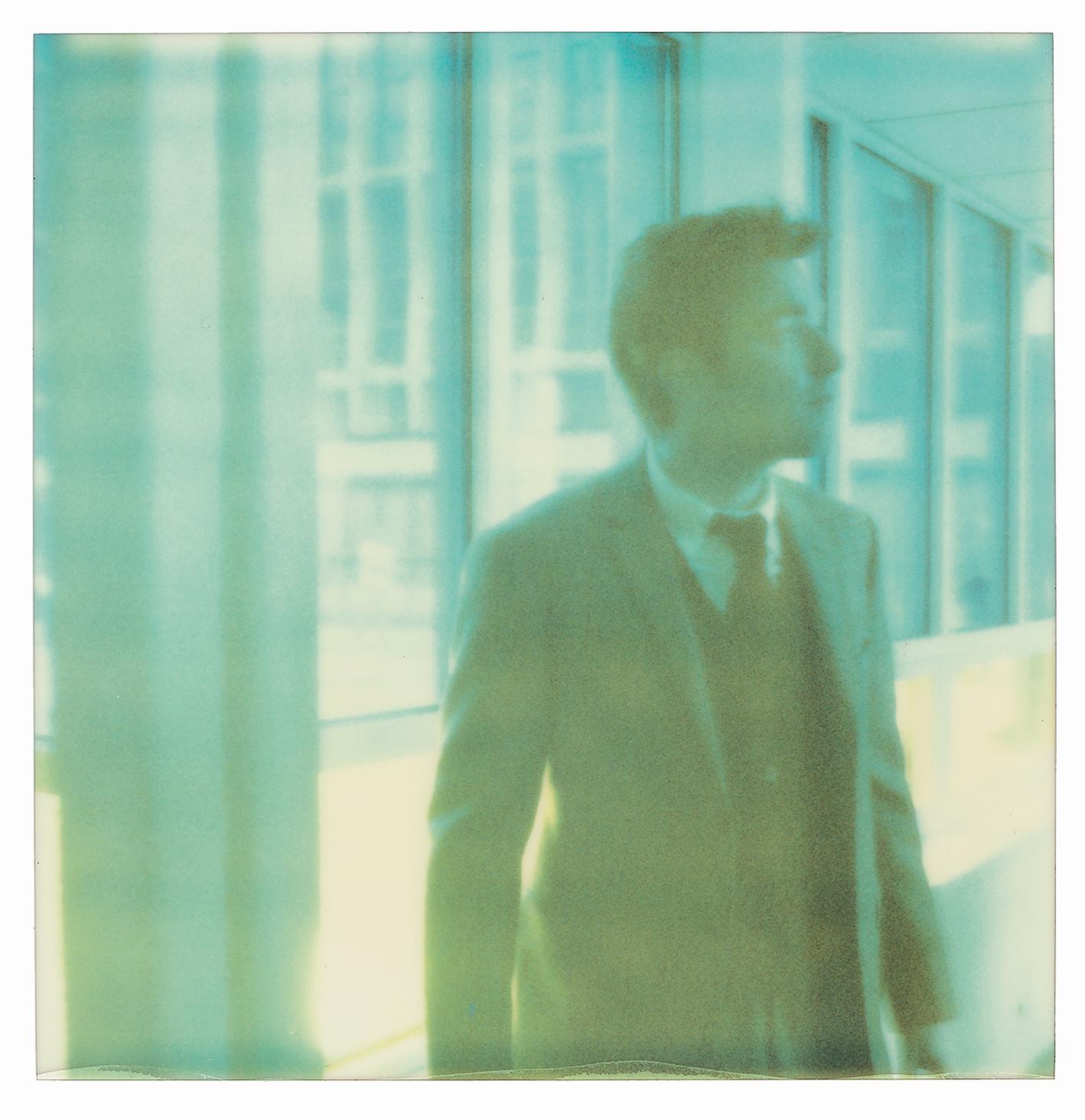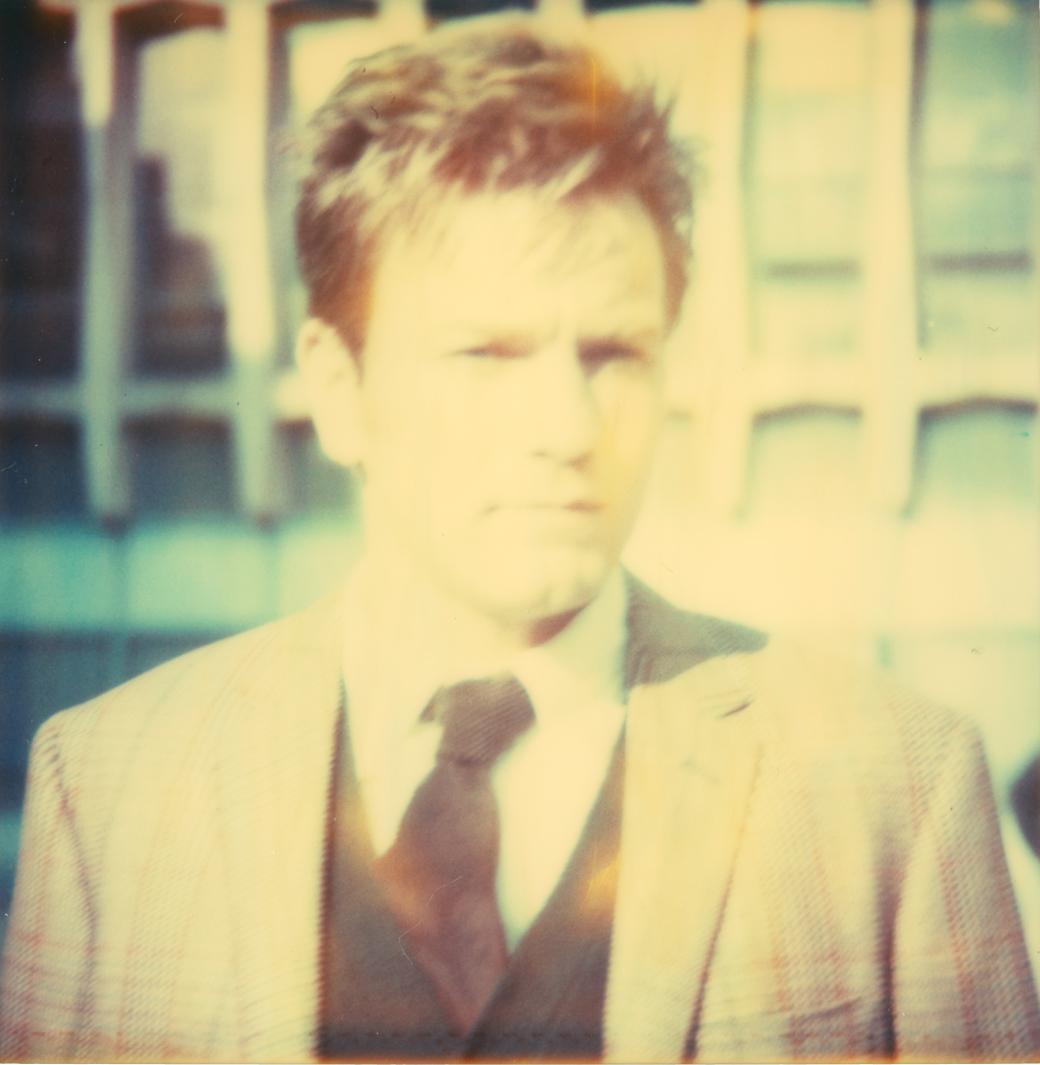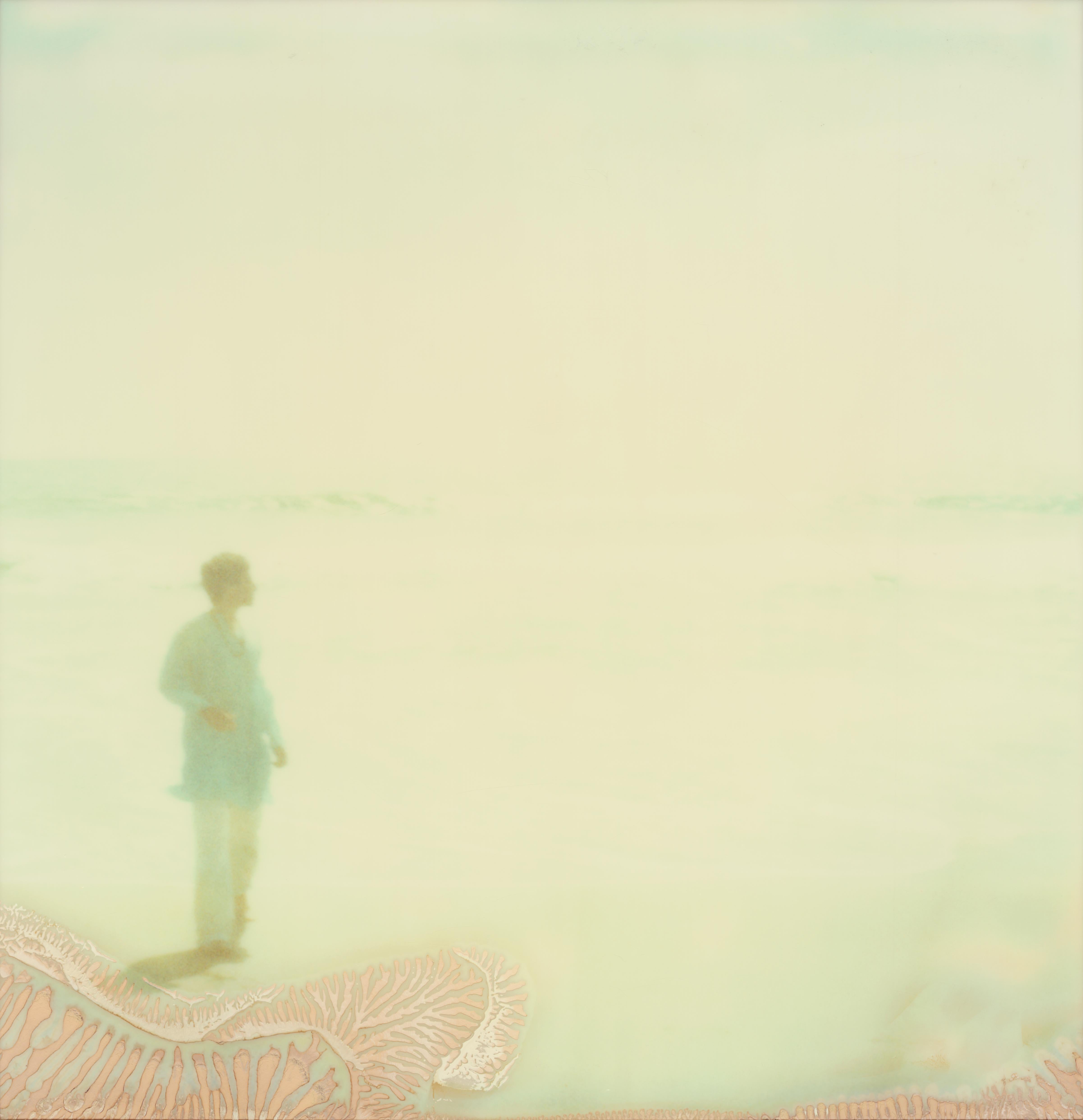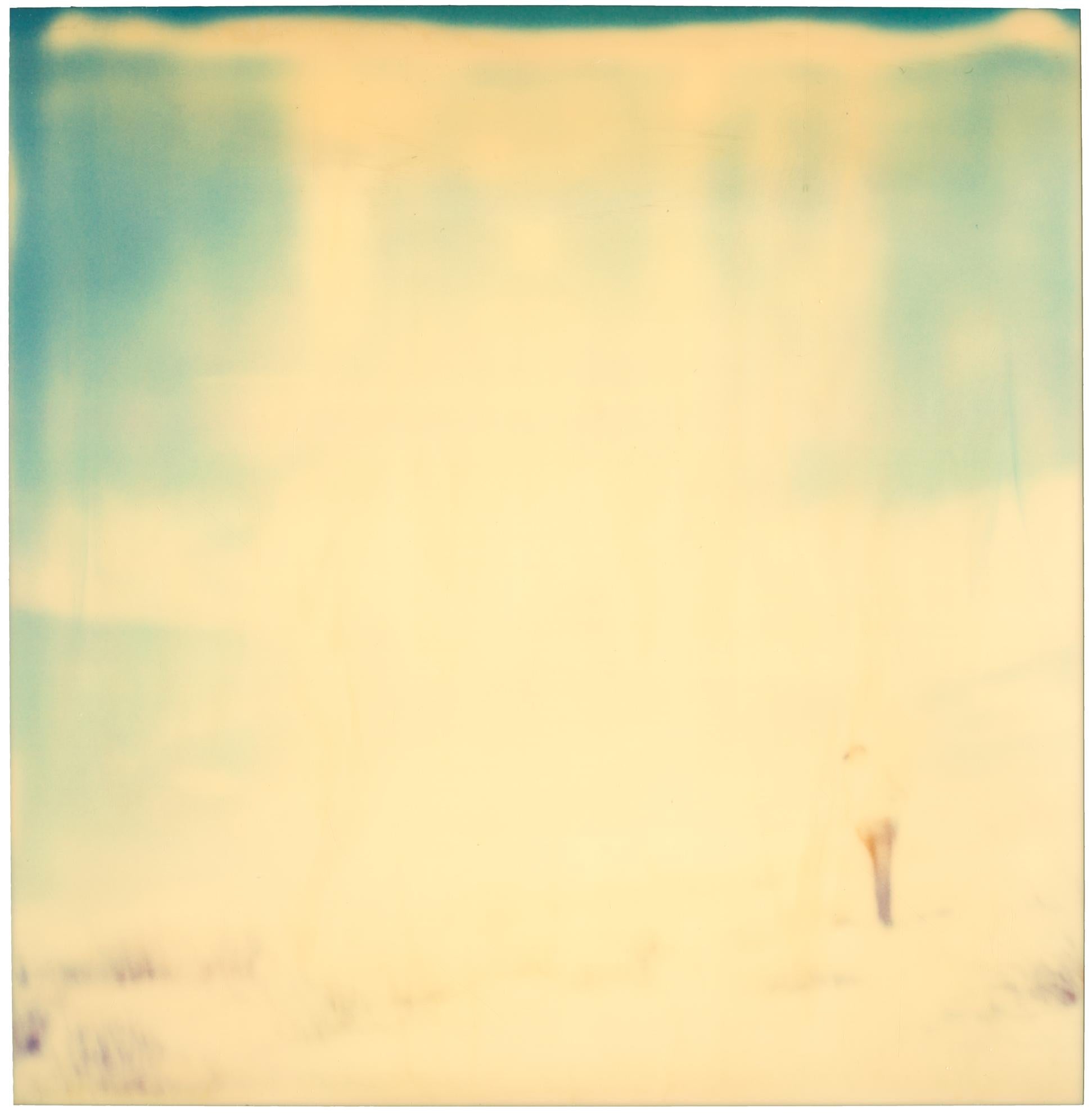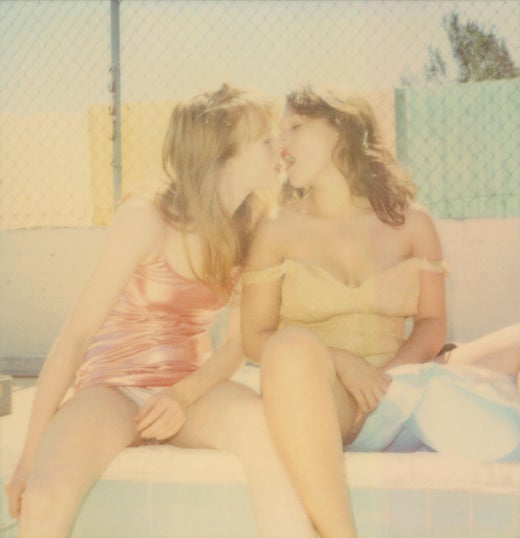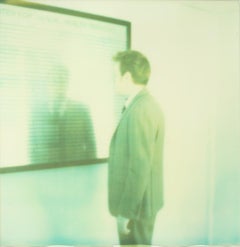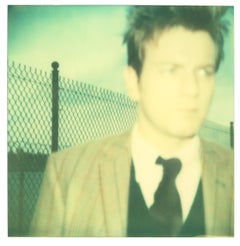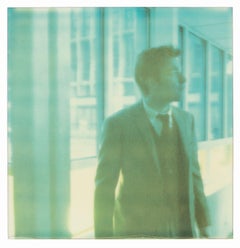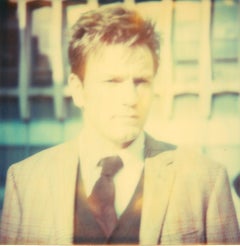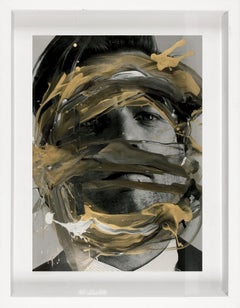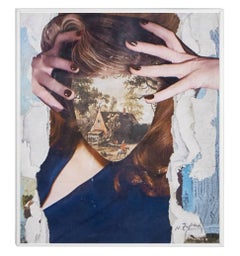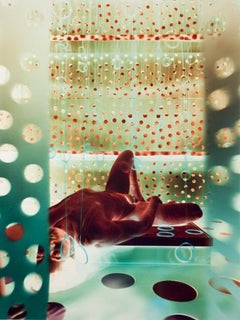Items Similar to Headless (Stay) featuring Ewan McGregor
Want more images or videos?
Request additional images or videos from the seller
1 of 2
Stefanie SchneiderHeadless (Stay) featuring Ewan McGregor2006
2006
$380
£288.39
€332.18
CA$543.02
A$595.96
CHF 307.35
MX$7,119.21
NOK 3,894.76
SEK 3,649.57
DKK 2,480.78
About the Item
Headless (Stay) - 2006
featuring Ewan McGregor
20x20cm,
Edition of 10 plus 2 Artist Proofs.
Archival C-Print, based on the original Polaroid.
Certificate and Signature label.
Artist Inventory #5084.
Not mounted.
Torsten Scheid, “Fotografie, Kunst, Kino. Revisited.”, FilmDienst 3/2006, page 11-13
Photography Art Cinema. Revisited
Stay expands a traditional connection through new facets
Interwoven between the media of photography and film is a veritable mesh-work of technical, motific, metaphorical and personal interrelationships. Extending from photo-film which, as in La Jetée by Chris Marker (France, 1962) is a montage of single, unmoving photographs all the way to the portrayal of photographic motifs in Hollywood cinema―most recently in Memento (USA, 2000) and One hour photo (USA, 2002)―is the range of filmic-photographic interactions on the one hand, and from the adaption of modes of cinematic production to the imitation of film stills on the other. For instance, with the legendary Untitled Film Stills (1978) of the American artist Cindy Sherman, who later made her debut as a film director with Office Killer (USA, 1997) and thereby, like many others, changed sides: Wim Wenders, Robert Frank and Larry Clark are doubtlessly the most successful of these photographic-filmic border crossers. This brief survey provides only a vague indication of the dimensions of this intermedial field, which in fact extends much further and is constantly being cultivated.
Also as a motif in film, photography has experienced a historical transformation: Photographers were once considered to be technicians who mastered a craft but never achieved the status of artists. Photographer-figures were caught in the allure of beautiful appearance, incapable of penetrating to the actual essence of things. Such depth was reserved for literature or painting. When photography in film touched upon the sphere of art, then most often as its contrasting model, as the metaphor for a superficial access to the world. Coming to mind are Fred Astaire as a singing fashion photographer in Stanley Donen’s musical film Funny Face (USA, 1957), or the restless lifestyle-photographer in Michelangelo Antonioni’s genre-classic Blow up (GB, 1966). For the doubting Thomas, only that exists which can be photographed. He ultimately enters the world of fantasy and thereby the field of art only unwillingly, when he becomes entangled in the world of his images. The last of his detail-enlargements shows only the photographic grain and has lost all connection to reality. The photograph looks as if it had been painted by Bill, the painter who is both friend and antagonist to the protagonist.
Photography as Art
It was first around the end of the last century that numerous filmmakers discovered photography as a genuine art form. In The Bridges of Madison County (USA, 1995) a sensitive Clint Eastwood stands, camera in hand, on the threshold of artistic status, and in Smoke (USA, 1994) a tobacco merchant ripens into a philosopher through his involvement in photography. Finally, in John Water’s parody of the art market, Pecker (USA, 1998), a provincial tom-fool is hyped into celebrated stardom amid the New York art scene because of his blurred snapshots. This film about a postmodern Kaspar Hauser in photographic art (with clear parallels to Richard Billingham, the British shooting star of the nineteen-nineties), not only takes into account the exponentially expanded significance of photography in the art market, but also attributes to photography an extreme degree of conformity to the “operating system” of the visual arts. This admittedly ironic equation of photography and the visual arts is new. It is repeated with much more earnestness in Lisa Chollondencko’s High Art (USA) from the same year. Artistic photography has finally become established in a cinematic context.
Stay
Stay (USA, 2005) could have fitted in seamlessly here. Considering that the films High Art and Pecker establish photography as an ideal art form at the end of the millennium, director Marc Forster (Monster’s Ball, Finding Neverland) takes a step backward; he revives an anti-technical, intuitive concept of art, including the customary clichés about madness and genius. This choice documents less an anachronistic notion of art (especially considering that painting is currently experiencing a Renaissance) than instead the appraisal that paintings are more suitable for representing the free objectification of the mind. Stay is not an artist-film but rather a psycho-thriller in which the borders between dream and reality become blurred.
The psychiatrist Sam Foster (Ewan McGregor) has saved his girlfriend, the artist Lila (played by Naomi Watts) from committing suicide. Now he is attempting to keep another patient, the art student Henry Letham (Ryan Gosling) from killing himself, but succumbs in that endeavor more and more to a whirlpool of inexplicable events. Any further words would already be interpretation and would reduce the significatory potential of the film. The film is loaded with meaning down to the tiniest details―including the notoriously short pants of the protagonist―or it willingly offers itself as a projection screen for speculations. Line-crossings, subjective camera-views of utterly strange figures, and pan-shots in which space and time shift abruptly all serve to confuse the viewer. One scene switches with no transition into paper photography; other scenes hesitate, repeat themselves. The temporal continuum of the film is caught in loops. Figures merge into each other. Miracles occur: blind people regain their sight, the dead are reawakened to life. If it is the continuity of events which distinguishes dream from reality, then everything which the psychiatrist Sam experiences is a dream.
It is precisely here, in this intermediate world of imagination and reality, that the film brings paintings into play, and with them the Polaroid photographs of Stefanie Schneider. For even if the paintress Lila drips paint all over herself in the film, in fact her paintings are without exception based on photographic models which―thanks to modern technology―have been printed onto canvas.
Bizarre Dream-Worlds
Stefanie Schneider’s vague and evanescent Polaroids work towards a painterly impact. The artist, who resides alternately in Berlin and Los Angeles, exclusively uses out-of-date film material. She takes into account chance occurrence, the scarcely predictable waywardness of damaged emulsions. Her associative Polaroids portray a bizarre, film-like world which further enhances the irrealism of Stay. Independently of each other, but not without reason, both Marc Forster and Stefanie Schneider are repeatedly compared with David Lynch. Stranger than Paradise is the title of Schneider’s new photographic volume which, punctually with the start of the film, has been published by Hatje Cantz. The title borrowed from Jim Jarmusch is no accident: Cinema, not artistic photography, is the world from which the former cutter draws her visual models. And whoever has carefully studied the jazzy photographer of her series 29 Palms, CA can recognize beneath the orange-red wigs the cinematic actress Radha Mitchell (Finding Neverland, High Art).
A few motifs from this series, which was presented in an extensive edition by the Lumas gallery, are already sold out. The popularity of the artist is rising. But even if Schneider’s gallery makes this claim, her photography does not in fact play a major role in the film Stay. Instead the presence of the Polaroid photographs onscreen is limited to short photographic sequences, to the―admittedly magical―end credits, and to a few paintings on the set. It is precisely here at the periphery, on the symbolical level, however, that the film unfolds its central meaning―for example, when in Lila’s studio photographs of walruses may be seen, a motif which is familiar to the viewer from a previous scene with the art student Henry. In this new context, the images acquire an impact like the visualization of a strange memory. The pictures do not seem to belong to Lila and already anticipate in an allusive manner the peculiar transformation which her paintings undergo at the end of the film.
The overlapping of the protagonists has a correspondence in the interpenetration of inner and outer worlds: In another scene, in which Henry visits a table-dance bar, there is a photographic sequence. The flood of sharply highlighted, ever-changing images cannot be unambiguously situated, however. On the one hand, it can be read as a projection in the depicted space; and on the other hand, it presents itself as the stream of consciousness of the protagonist, whose blurred scraps of memory it portrays.
Art as Key
The photographs do not function in Stay as props for the plot, but instead they are metaphors for the interpenetration of dream and reality. They are not so much motifs as rather means of representation. On the one hand, they are almost seamlessly integrated into the portrayal, but on the other hand―as works of art―they play a key role in the reception of the film. Whoever considers the cinema to be simply an escapist pleasure must have the impression, with regard to Stay, of being in the wrong film. Stay repudiates all expectations regarding genre and demands a fundamental shift of attitude. One can argue about whether this claim is justified, but the film demands to be viewed as a work of art. Not in the sense of contemplative immersion, but in terms of an active reception. Meaning cannot be derived directly from the film. Meaning is an addition made by the viewer. If Stay has a special message, then it is this: Everyone constructs his or her own film. In fact, in Stay there is a short scene which takes place in the art academy and may be understood as an interpretative instruction. On the basis of a painting, the professor offers a lesson which can be expressed in two simple formulas. First, everything is significant. And second, everything is somehow connected with everything else. The individual elements of the film must be decoded and set into relationship with each other.
After the Film is Before the Film
With director Marc Forster and photographic artist Stefanie Schneider, two coequal partners are at work. The photographer brings her style-generating aesthetic into the cinematic representation. She appears as the author of her images, not as the executor of instructions from the director. This status is also evident in the participation of the artist in the press conference and in the fact that the premiere party took place in Stefanie Schneider’s gallery Lumas. Whoever came early or stayed late could here take an unobstructed look at the pictures and review the film at leisure. With regard to the photographs, one is inclined to see the film a second time. But also in the retrospective photographs after the film, the puzzle-game continues. “This is the way it was,” each photograph seems to say. But were things really that way? In fact, the poetically blurred Polaroid photographs do not provide a documentation, but rather an interpretation of the film from an artistic perspective which is lost in reverie. On the one hand, they make selections from the cinematic plot, and on the other hand, they transcend these happenings.
The film photos become autonomous and make reference, not to filmic “facts,” but to other possibilities―to that which might have been, to the inherent fictionality of the film.
- Creator:Stefanie Schneider (1968, German)
- Creation Year:2006
- Dimensions:Height: 7.88 in (20 cm)Width: 7.88 in (20 cm)Depth: 0.04 in (1 mm)
- More Editions & Sizes:50x49cm, Edition of 10 plus 2 Artist Proofs. Price: $700
- Medium:
- Movement & Style:
- Period:
- Condition:
- Gallery Location:Morongo Valley, CA
- Reference Number:1stDibs: LU652313464882
Stefanie Schneider
Stefanie Schneider received her MFA in Communication Design at the Folkwang Schule Essen, Germany. Her work has been shown at the Museum for Photography, Braunschweig, Museum für Kommunikation, Berlin, the Institut für Neue Medien, Frankfurt, the Nassauischer Kunstverein, Wiesbaden, Kunstverein Bielefeld, Museum für Moderne Kunst Passau, Les Rencontres d'Arles, Foto -Triennale Esslingen., Bombay Beach Biennale 2018, 2019.
About the Seller
4.9
Platinum Seller
Premium sellers with a 4.7+ rating and 24-hour response times
Established in 1996
1stDibs seller since 2017
1,047 sales on 1stDibs
Typical response time: 3 hours
- ShippingRetrieving quote...Shipping from: Morongo Valley, CA
- Return Policy
Authenticity Guarantee
In the unlikely event there’s an issue with an item’s authenticity, contact us within 1 year for a full refund. DetailsMoney-Back Guarantee
If your item is not as described, is damaged in transit, or does not arrive, contact us within 7 days for a full refund. Details24-Hour Cancellation
You have a 24-hour grace period in which to reconsider your purchase, with no questions asked.Vetted Professional Sellers
Our world-class sellers must adhere to strict standards for service and quality, maintaining the integrity of our listings.Price-Match Guarantee
If you find that a seller listed the same item for a lower price elsewhere, we’ll match it.Trusted Global Delivery
Our best-in-class carrier network provides specialized shipping options worldwide, including custom delivery.More From This Seller
View AllSam, Interior Hospital (Stay) featuring Ewan McGregor - Polaroid
By Stefanie Schneider
Located in Morongo Valley, CA
Sam, Interior Hospital (Stay) featuring Ewan McGregor - 2006
20x20cm,
Edition of 10,
Archival C-Print, based on the Polaroid.
Certificate and Signature label.
Artist Inventory ...
Category
Early 2000s Contemporary Color Photography
Materials
Photographic Film, Archival Paper, C Print, Color, Polaroid
Sam (Stay) - starring Ewan McGregor
By Stefanie Schneider
Located in Morongo Valley, CA
Stefanie Schneider's work was used for Marc Forster's movie 'Stay'. Featuring Ewan McGregor, Naomi Watts and Ryan Gosling. Naomi and Ryan were both portraying artists and Stefanie's ...
Category
Early 2000s Contemporary Color Photography
Materials
Photographic Film, Archival Paper, C Print, Color, Polaroid
Sam, Interior Hospital - featuring Ewan McGregor, Contemporary, Polaroid
By Stefanie Schneider
Located in Morongo Valley, CA
Sam, Interior Hospital - featuring Ewan McGregor (Stay) - 2006,
38x36cm,
Edition 1/10.
Analog C-Print, hand-printed by the artist on Fuji Archive Crystal Paper, based on the ori...
Category
Early 2000s Contemporary Color Photography
Materials
Photographic Film, Archival Paper, C Print, Color, Polaroid
Sam (Stay) featuring Ewan McGregor - Polaroid
By Stefanie Schneider
Located in Morongo Valley, CA
Sam (Stay) featuring Ewan McGregor - 2006
20x20cm,
Edition of 10,
Archival C-Print, based on the Polaroid.
Certificate and Signature label.
Artist Inventory # 5040b
Not mounted...
Category
Early 2000s Contemporary Color Photography
Materials
Photographic Film, Archival Paper, C Print, Color, Polaroid
The Prince #02 (The Princess and her Lover), analog, mounted
By Stefanie Schneider
Located in Morongo Valley, CA
The Prince II (The Princess and her Lover) - 2009 -
98x96cm,
Edition 1/5.
Analog C-Print based, hand-printed by the artist, based on the Polaroid.
Mounted on Aluminum with matte ...
Category
Early 2000s Contemporary Figurative Photography
Materials
Metal
Untitled (Into the Sun) - Contemporary, Polaroid, Photography
By Stefanie Schneider
Located in Morongo Valley, CA
Untitled (Into the Sun) - 2001
48x47cm,
Edition of 10 plus 2 Artist Proofs.
Archival C-Print, based on the Polaroid.
Signature label and Certificate.
Artist Inventory No. 1329.
N...
Category
Early 2000s Contemporary Landscape Photography
Materials
Archival Paper, Photographic Paper, C Print, Color, Polaroid
You May Also Like
Ewan Mcgregor Portrait, Mixed Media on a B&W photograph.
By Cristian Hunter
Located in Miami Beach, FL
This artwork was created by the artistic duo Hunter & Gatti (2010–2023). These works are part of the archive managed and exhibited by Cristian Hunter.
The artist's technique consists...
Category
2010s Contemporary Mixed Media
Materials
Acrylic, Black and White, Archival Pigment, Oil
Maybe Yes, Maybe No
Located in Los Angeles, CA
The Art of Seduction, 2023.
Cyanotype Unique Variant Print
Limited Edition of 7
Cyanotype gives a contemporary edge to this flirty dialogue made from vintage magazines, and brings conversation to the counterculture of the "swinging sixties".
+ Cyanotype hand-printed on Arches BFK Rives French watercolor paper
+ Deckled Edges on all four sides
+ Signed and editioned on front in pencil
+ Letter of Authenticity
+ Printed in Los Angeles, CA
WHAT IS A CYANOTYPE?
cyan = blue
type = print
Cyanotype is a historic photographic processes, invented in 1842 and used by Anna Atkins–the first female photographer. The process involves coating watercolor paper with light-sensitive chemistry made of iron salts. Photographic negatives are laid on top, exposed in the sunlight, and then washed in water to develop into the deep Prussian-blue unique to cyanotypes. Brings a moment of beauty and conversation to any space.
ABOUT THE ARTIST:
Alexandra DeFurio...
Category
2010s Contemporary Figurative Photography
Materials
Film, Mixed Media, Watercolor, Magazine Paper, Color, Photogram
Lover Man, Oh Where Can You Be? Framed Large limited edition color photograph
By Natasha Zupan
Located in Miami Beach, FL
Zupan combines images from old masters, alchemical prints, contemporary artists, and bits from magazines and newspapers to create overlapping, intersecting worlds of transparencies a...
Category
2010s Contemporary Abstract Photography
Materials
Archival Paper, Photographic Paper, Color, Pigment
Untitled (Figure #4)
By Robert Calafiore
Located in New York, NY
Pinhole camera Chromogenic print (Unique)
Signed and dated, verso
This artwork is offered by ClampArt, located in New York City.
Robert Calafiore employs a hand-built pinhole camer...
Category
2010s Contemporary Figurative Photography
Materials
C Print
She Disappeared into Complete Silence (AD7258) - abstract figurative photograph
By Mona Kuhn
Located in San Francisco, CA
In the series 'She Disappeared into Complete Silence' (2014) Mona Kuhn takes a new direction into abstraction.
She turns to a highly austere and restrained reductionist geometry and distilled formal purity, connecting the interior to the exterior, the visible to the hidden. These reflections cause one to linger, as they merge to create a dynamic equilibrium of tension, spaces and rythms.
Mona Kuhn (AD7258) (She Disappeared into Complete Silence)
30" x 40" / 76cm x 102cm
edition of 8 + 2AP
45" x 60" / 114cm x 152cm
edition of 8 + 2AP
limited edition photograph printed under artist supervision + accompanied by signed artist certificate:
artist signature labels are 8x10 in size
signed, editioned, dated and titled by the artist, and stamped for authenticity
label is placed centered on verso of the mounted print
__________________
About the artist
Acclaimed for her contemporary depictions, Kuhn is considered a leading artist in the world of figurative discourse. Throughout a career spanning more than twenty years, the underlying theme of her work is her reflection on humanity’s longing for spiritual connection and solidarity. As she solidified her photographic style, Kuhn created a notable approach to the nude by developing friendships with her subjects, and employing a range of playful visual strategies that use natural light and minimalist settings to evoke a sublime sense of comfort between the human figure and its environment. Her work is natural, restful, and a reinterpretation of the nude in the canon of contemporary art.
For the past two decades, the Los-Angeles based artist's works have been shown steadily, revealing an astonishing consistency in technique, of subject and of purpose. In 2001, Kuhn’s photographs were first seen by an influential audience during the exhibition at Charles Cowles Gallery in Chelsea, New York. Kuhn’s distinct aesthetic has propelled her as one of the most collectible contemporary art photographers—her work is in private and public collections worldwide and she is represented by galleries across the United States, Europe and Asia.
Kuhn was born in São Paulo, Brazil, in 1969, of German descent. In 1989, Kuhn moved to the US and earned her BA from The Ohio State University, before furthering her studies at the San Francisco Art Institute. She is currently an independent scholar at The Getty Research Institute in Los Angeles. Occasionally, Mona teaches at UCLA and the Art Center College of Design in Pasadena.
Mona Kuhn’s first monograph, Photographs, was debuted by Steidl in 2004; followed by Evidence (2007), Native (2010), Bordeaux Series (2011), Private (2014), and She Disappeared into Complete Silence (2018/19). In addition, Kuhn's monograph titled Bushes and Succulents has been published by Stanley/Barker Editions, with a debut at Jeu de Paume in Paris, in 2019. A stunning career retrospective of Mona Kuhn's works has been published by Thames & Hudson, Spring 2021. Kuhn's forthcoming publication Kings Road, will be published and released by Steid this Fall 2021.
Mona Kuhn’s work is in private and public collections worldwide, including The J. Paul Getty Museum, Los Angeles County Museum of Art, The Hammer Museum, Perez Art Museum Miami, Museum of Fine Arts, Houston, and the Kiyosato Museum in Japan. Kuhn's work has been exhibited at The Louvre Museum and Le Bal in Paris; The Whitechapel Gallery and Royal Academy of Arts in London; Musée de l’Elysée in Switzerland; Leopold Museum in Vienna Austria, The Polygon Gallery in Vancouver Canada, Taipei Fine Arts Museum in Taiwan and Australian Centre for Photography. Mona Kuhn lives and works in Los Angeles.
__________________
Solo Exhibitions
2021
Mona Kuhn: Selected Works, Galerie XII, Paris
Mona Kuhn: Works, Edwynn Houk Gallery, New York
Mona Kuhn: Works, Flowers Gallery, London
Mona Kuhn: Works, Galerie XII, Los Angeles + Paris + Shanghai
Mona Kuhn: 835 Kings Road, Art, Design and Architecture Museum, Santa Barbara
2020
Still Light, Jardin du Bra'haus, Montée du Château, Clervaux, Luxembourg
Mona Kuhn: Early Depictions, Flowers Gallery, London
Mona Kuhn: Intimate, UP Gallery, Taipei, Taiwan
2019
Bushes and Succulents, Euqinom Gallery, San Francisco
Mona Kuhn: She Disappeared, Jackson Fine Art...
Category
21st Century and Contemporary Contemporary Color Photography
Materials
Photographic Film, Photographic Paper, Silver Gelatin
Long exposure figurative Photography: 'Illuminations No. 53'
By Florence Montmare
Located in New York, NY
'Illuminations started in 2002 when a relationship was slowly falling apart. While trying to save it, we rented a large stylish apartment in Stockholm, and then later one in Arles, France, hoping that a change of scene would have a posi-tive effect. The new spaces made the distance between us more acute, and the inevitable break even more obvious. The ritual of making one photograph each night became crucial to me. I left the camera shutter open for 3 to 8 hours in a darkened bedroom, and as the morning light arrived I interrupted the exposure. It is a private journal, documenting time and memory, where present meets past.'
Born in Vienna to Swedish and Greek parents and raised in Stockholm, Florence Montmare has an MBA in Design Management from Linnaeus University, Sweden and studied at the School of Visual Arts. A graduate of International Center of Photography, New York, she collaborated with artist Sam Samore...
Category
Early 2000s Contemporary Color Photography
Materials
Archival Pigment
More Ways To Browse
Slim Aarons Riva Boats
Vintage Funeral Photos
Baths Of Caracalla Print
Chris Steele Perkins
Henry Walter Smith
Italian Fascist Art
Sam Smith
Slim Aarons Acropolis
Slim Aarons Ibiza
Ancient Chinese Paper
Myopia Hunt
Lil Kim Vintage
Mak Painting
Push Toy
Slim Aarons Jackie Kennedy
Aaron Smith
Alex Sher Steps
Elizabeth I Portrait
